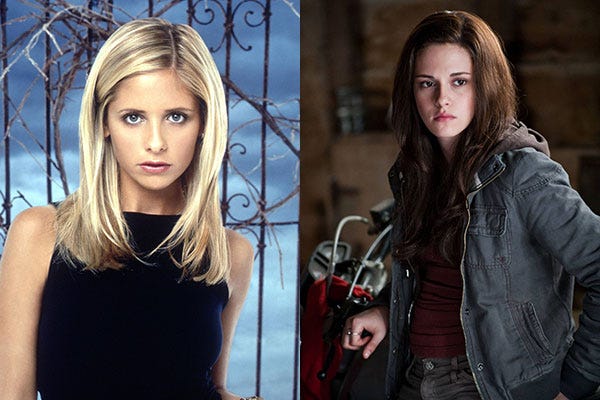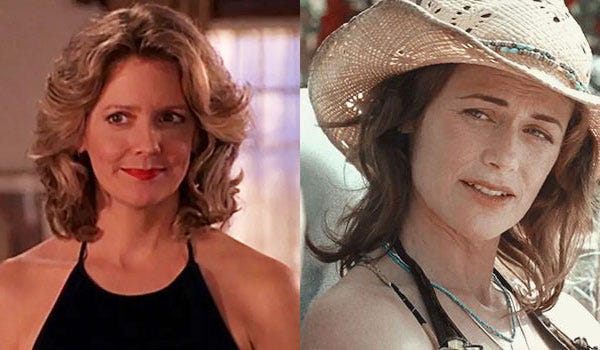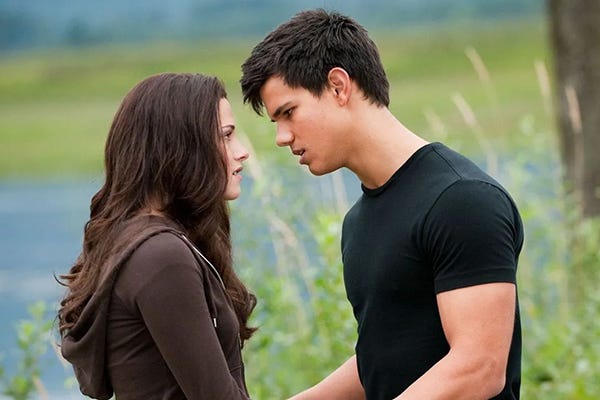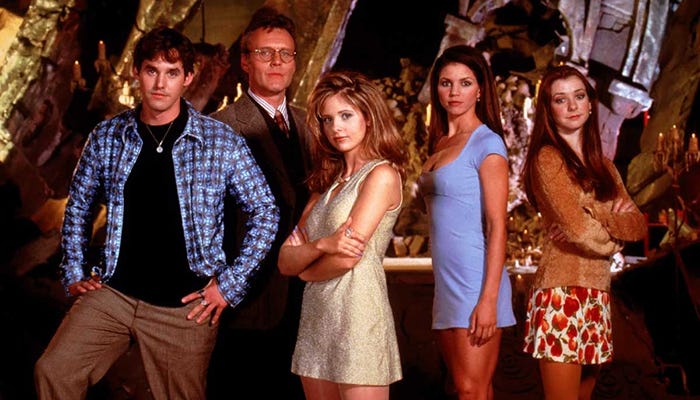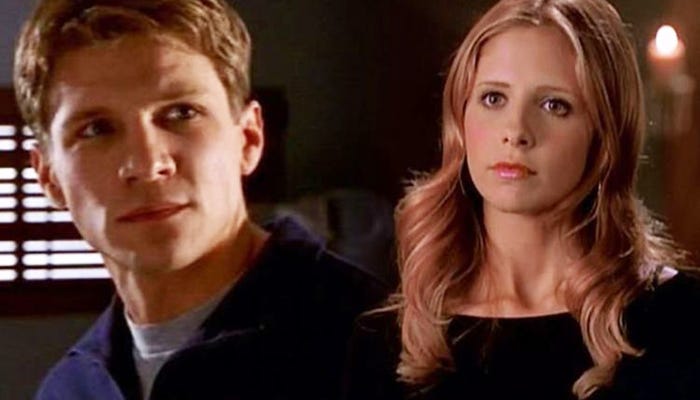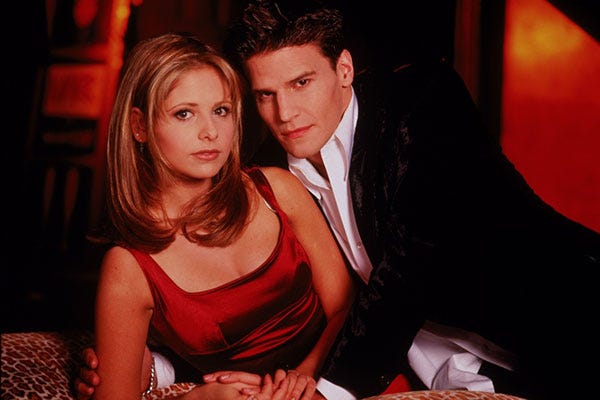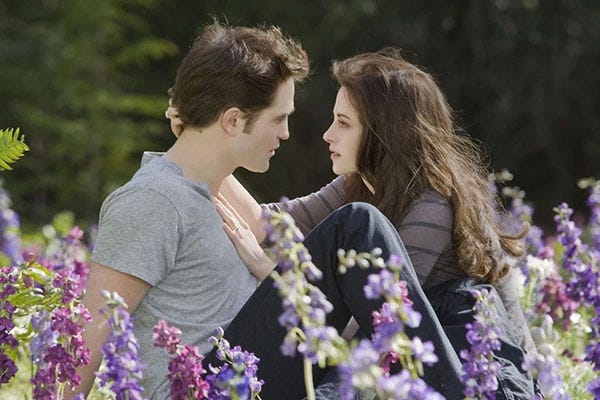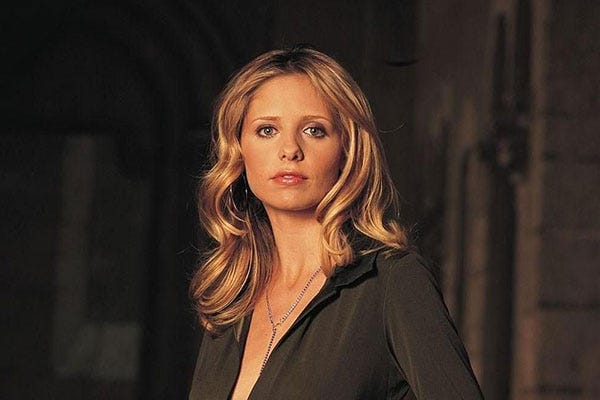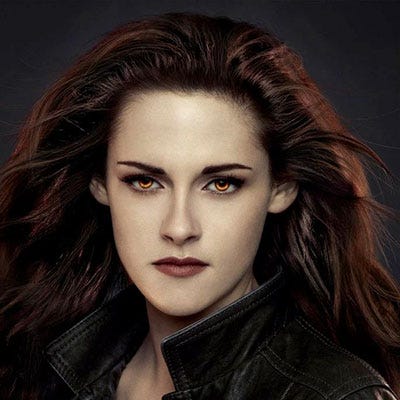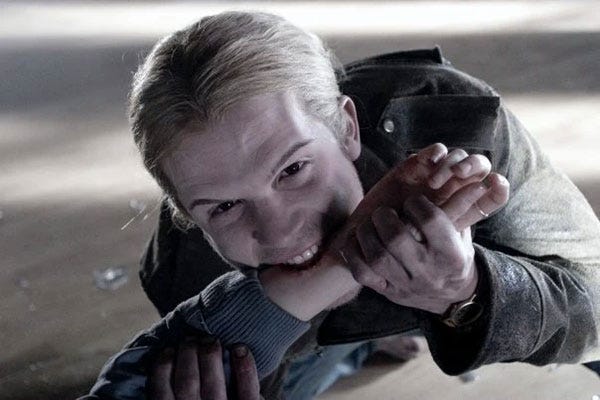From Buffy to Bella: Uplifting Fierce Feminine Strength in New Gothic Tales
A close look at the evolution of female tropes in Gothic storytelling
Modern authors use classic Gothic tropes to subtly challenge the patriarchy. And they owe a debt to Buffy Summers of Buffy the Vampire Slayer and Bella Swan of the Twilight series. These heroines are so empowering that they shaped a generation in showing that female characters can be complex and challenge norms.
Today’s heroines are tearing down oppressive systems from within the shadows. Their voices echo through the corridors, reshaping those problematic old myths. Buffy and Bella shine a new light on the archetype. Though different, their respective journeys reveal the genre’s evolution in depicting women’s diverse dimensions of strength.
At first glance, these two characters may appear quite distinct, but a closer examination reveals deep connections and unique qualities that make them both icons of feminine strength. Buffy and Bella both resist and reinforce Western gender norms in different ways. Buffy’s physical strength and leadership challenge traditional gender roles, but her alignment with conventional beauty standards shows a nuanced relationship with those norms. On the surface, Bella’s character evoked genre tradition–an innocent navigating love and danger in a supernatural world. Her intense connection to Edward defines her arc, echoing those fraught romances of history. But upon closer look, Bella’s character is more complex, affirming the role of men as protectors while simultaneously emphasizing that her passive position is a deliberate choice.
Two heroines on common ground
Both Buffy and Bella were raised by single mothers, a background that shapes their lives and adds texture to their characters. This shared circumstance paints a picture of resilience and self-reliance, vital traits that both young women would need to navigate the supernatural and emotional challenges ahead.
Their relationships with their fathers also offer an interesting contrast. While Bella strives to build a connection with her estranged father, Buffy never had the chance, as her parents were divorced. These relationships—or lack thereof—have lasting effects on how they approach love, friendship, and responsibility.
For Buffy, life changed dramatically when she became the Slayer, a warrior destined to battle the supernatural. Bella’s life took a profound turn as well when she moved in with her estranged father, giving up her happiness for her mother’s sake. These life-altering shifts set the stage for their respective hero’s journeys.
While Buffy was popular before her transformation into the Slayer, Bella’s introverted nature sets her apart. Buffy’s secret identity as a Slayer pushed her to create distance from others, a stark contrast to Bella’s natural inclination towards solitude and her preference for reading over socializing. Yet both characters exist on their own in the world, setting the stages for their journeys.
Facing Mortal Danger: A Gothic trope
From the outset, Bella is introduced as someone willing to sacrifice her personal happiness for others. By moving in with her estranged father, she allows her mother to follow her dreams. This selflessness forms the bedrock of Bella’s character and underscores her dedication to those she loves.
Bella’s life in Forks is fraught with peril. A near-fatal car accident reveals not only her vulnerability but also introduces her to Edward’s supernatural abilities. Her journey is punctuated by constant danger, whether from cars, potential assault in Port Angeles, or the relentless tracker, James. Yet through it all, Bella’s resilience and Edward’s protection see her through.
Bella’s interaction with vampires is also complicated. While attracted to Edward, she is nearly turned into a vampire herself by James. Edward’s inner turmoil about his vampiric nature is mirrored in Bella’s own ambivalence, creating a rich tension that drives the series.
When Edward leaves to protect her, Bella spirals into isolation and depression. Her pain evokes classic Gothic melodrama and leaves Bella profoundly depressed. As a result of this despair, she takes major risks–including seeking out dangerous encounters and pursuing adrenaline-filled activities–in her desperation to feel close to Edward again. This risk-taking behavior adds layers to her character, showing a darker, more complex side.
Jacob’s emergence as a friend and more highlights Bella’s capacity to heal and grow. Her relationship with him is another facet of her complex character, illustrating her ability to form deep connections despite her losses.
In contrast, Buffy’s character represents a significant departure from traditional portrayals of women in vampire fiction. No longer a virginal victim or a deadly temptress, Buffy is a Slayer, a warrior with physical strength and agility who actively fights against evil.
Buffy’s independence is at the core of her character. She makes her own decisions, leads her friends, and often subverts expectations. While she may reinforce some traditional ideals of beauty, her physical prowess and self-sufficiency are at the forefront.
Buffy’s role as the Slayer and titular character challenges male-dominated power structures. She leads a diverse group of friends and allies, defying the notion that physical strength and leadership are inherently masculine traits.
In contrast to Buffy’s active heroism, Bella represents a more vulnerable heroine defined by her romance. But Bella’s story does not end with lovesick self pity; as a vampire, Bella becomes an equal partner to Edward in strength and speed. While Buffy shoulders responsibility, Bella pursues dangerous risks trying to reconnect with Edward, nearly self-destructing without his stabilizing presence. Her cliff-diving echoes Gothic heroines’ tendency toward fatal romance.
Eventually Bella shows fortitude protecting her hybrid baby and gains her own supernatural powers. But her arc remains centered on romantic torment and dangerous obsession, very much aligned with the old victim trope.
Immortality
Even as Bella embraces immortality on her own terms, she initially remains tethered to Edward as her reason for existing. Buffy has a sense of purpose apart from any single relationship. But Bella proves that “vulnerable” heroines also can show grit. Her resilience and sacrifice speak volumes. Bella complicates the “weak damsel” stereotype through her steel spine.
Buffy does not define herself by a male counterpart; in fact the men in her life struggle to find identities outside of her. Riley breaks down several times post-Initiative, shook by comparing himself to her strength and her past vampire lovers.
Early on in the series, Buffy learns to deal with and overcome male oppression. Parker and Angelus actively get under Buffy’s skin and are perfect examples of the vampire as a narcissistic predator metaphor.
However, Bella fiercely challenges conventions as well. She defiantly protects loved ones, evolving from damsel to vampire warrior. Her shielding power manifests her inner strength.
Expanding the traditional trope of female characters in Gothic fiction
Despite differences, both Buffy and Bella expand the possibilities for women in this genre. Bella embodies sacrificial romance yet gains warrior fierceness over time. Buffy champions overt female capacity while revealing vulnerability. Together they capture women’s multitudes.
Though early on Bella depends on Edward, she grows into an active agent safeguarding others. Buffy could dust Angel at any time (and once actually did). Her lovers live in awe and respect of her prowess.
Buffy embraces her role as the Chosen One and learns to balance its responsibilities with her desires. Bella resists and feels ambivalent about the supernatural world at first but eventually embraces its dark allure.
Buffy slays as an empowered heroine balancing strength and femininity. With kick-ass fight skills, she dismantles limiting tropes about females in horror narratives. Buffy more recognizably modernizes the archetype completely as an icon of female empowerment.
Bella represents a more traditional but evolving heroine. While she chooses a more passive role in her relationships, her choices are emphasized as being her own. Even as a vampire, her fierce protection of loved ones turns up the girl power. But physical strength isn’t everything; Bella displays fortitude in all its forms.
Bella subverts ingrained expectations of the passive heroine victimized and defined by the male gaze and dark forces beyond her control. She emerges as a fiercely loyal, formidable and complex heroine defined on her own terms. She is no longer a “damsel in distress,” but weaponizes the old horror realm’s unease to expose and shatter misogynist confines. The “brooding manor lords” cower as this “madwoman in the attic” claims her rightful place at the head of the table, leading a new paradigm where shadows give way to light.
The role of romance
The portrayals of relationships in Buffy the Vampire Slayer and the Twilight Saga reflect different takes on love, responsibility, and femininity.
The relationship between Buffy and Angel is filled with passion and deep love, but it is also fraught with dangers and profound imperfections. The understanding they reach—that despite their love, they cannot be together—is a mature realization that reflects self-awareness and prioritizes the greater good over personal desires.
Indeed, the portrayal of physical intimacy between Buffy and Angel as a cautionary tale might be seen as problematic. Yet, it also emphasizes the weight of responsibility and the necessity of sacrifice in their relationship, reflecting a deeper complexity that moves beyond mere romantic fantasy.
Buffy’s emotional resilience, as demonstrated in episodes like “The Prom” and “Innocence,” showcases her ability to acknowledge heartbreak while still acting to save the day. This resilience contrasts sharply with Bella’s response to heartbreak, where she falls into deep despair. Buffy’s desire for an equal partnership presents a more complex and empowering portrayal of romance.
The relationship dynamics in the Twilight Saga, especially between Bella and Edward, present a more traditional view of romance that emphasizes dependence and protection and stand in stark contrast to Buffy’s relationships. While Bella’s love for Edward often borders on obsession, it lacks the mature introspection that defines Buffy’s relationship with Angel. Bella’s inability to move on and her codependent relationship with Edward may be seen as problematic.
Interestingly, in Buffy the Vampire Slayer, Buffy doesn’t seek a savior but a partner to fight alongside her. This desire for partnership and equality is a key difference from the dynamics in Twilight, where the emphasis often falls on protection and dependence.
Together, these narratives contribute to the ongoing dialogue about the portrayal of women, romance, and heroism in modern fiction. They challenge and redefine expectations, offering differing perspectives on love, strength, and agency that continue to engage audiences and provoke thoughtful discussion.
Self-actualization
As Buffy the Vampire Slayer progresses, we witness a transformation in Buffy’s character as she embraces the darker, lonelier path of the Slayer. Her calling transcends typical teenage concerns such as cheerleading or vying for homecoming queen.
Instead, Buffy’s journey takes her deep into the heart of her own darkness, leading her to request that Giles become her watcher once more. This acceptance of her true self and her willingness to confront her internal darkness adds layers of complexity to her character that set her apart as a heroine.
In contrast, Bella’s journey in the Twilight Saga does not carry the same sense of self-realization or willingness to confront the more challenging aspects of her existence. Despite warnings and insights from Edward, Jacob, and Rosalie about the harsh realities of being a vampire, Bella’s focus remains singularly fixed on being with Edward.
Her transformation into a vampire doesn’t lead to profound self-discovery or carry significant consequences. Instead, it’s wrapped in a romantic idealization that glosses over the complex, darker facets of her new life.
Classic horror tropes: contrasting approaches to the genre
Twilight retains classic horror’s ethos despite its love story bent. Bella’s self-sacrifice for her mother shows virtue interlaced with melancholy. Her brushes with death evoke the genre’s morbid allure. Though she finds love, perils persist in her vampire world.
James embodies the supernatural threat, countered by Edward’s protective instincts. Here the classic Gothic dynamic appears–an innocent heroine pulled into dangerous realms beyond imagination. Their triumph over James provides closure, but darkness simmers beneath the surface.
Twilight modernizes tropes but stays rooted in these classic foundations: shadowy forests, irresistible allure of the “dark side,” the knife’s edge between life and death. Though rendered today, the existential struggle remains the same. Inner torment transcends era or context.
While Twilight’s gentle romance diverges from Gothic horror, it sustains that haunting duality of light and dark within us all. Through Bella, the genre’s timeless power persists: evil often seduces, despair lingers, but hope and love endure. As long as humanity does, Gothic’s uneasy caverns will continue to draw us into their depths.
Yet both franchises enrich their genres by offering nuanced, resonant explorations of female identity. Their contrasting approaches reflect shifting cultural views on gender roles and women’s diverse capabilities. Together, they capture both timeless appeals of romantic and modern re-envisioning of female empowerment. Their dual legacies reveal the plurality of heroines today’s complex world requires.
Their legacies shift heroines from simplistic victims to nuanced agents with diverse dimensions. Both franchises prove narratives can show women’s strength beyond reductive “strong female” cliches. From countless shades of courage comes deeper identification.
Multidimensional heroines: icons of strength
Bella and Buffy set new standards for how tales can liberate non-male archetypes from restrictive molds. Their rich portrayals move the needle for multidimensional heroines, and fuel discussion about evolving representations of women in media. They prove the terms “vulnerability” and “strength” have myriad, equally compelling expressions. Their legacies leave lasting impressions on modern literature’s scope.We celebrate the heroines who contain both steel spines and tender hearts. We need stories reflecting those contradictions and multitudes within us all.
Buffy and Bella are more than just characters in a story; they are symbols of modern femininity, each with their own distinct brand of strength. Buffy’s physical prowess as the Slayer and Bella’s emotional resilience in the face of love and tragedy resonate with audiences and continue to inspire.
Though their paths differ, both heroines exhibit courage, self-sacrifice, and a sense of duty that transcends their personal desires. Whether it's Buffy’s relentless pursuit of evil or Bella’s unyielding devotion to her loved ones, these characters are testament to the power of female characters’ resilience, empathy, and determination. Together, they create a nuanced and compelling picture of what it means to be a strong woman in today’s world.
Want more?
Calling all Buffy fans! Would you love to attend watch parties and other events celebrating Buffy and Angel? Come join us on our discord where you can find other Scoobies just like yourself conversing daily about these shows and the Buffy movie. Check back here all month for content on your favorite slayer and vampires, and follow us on Instagram for exclusive slayer content!








